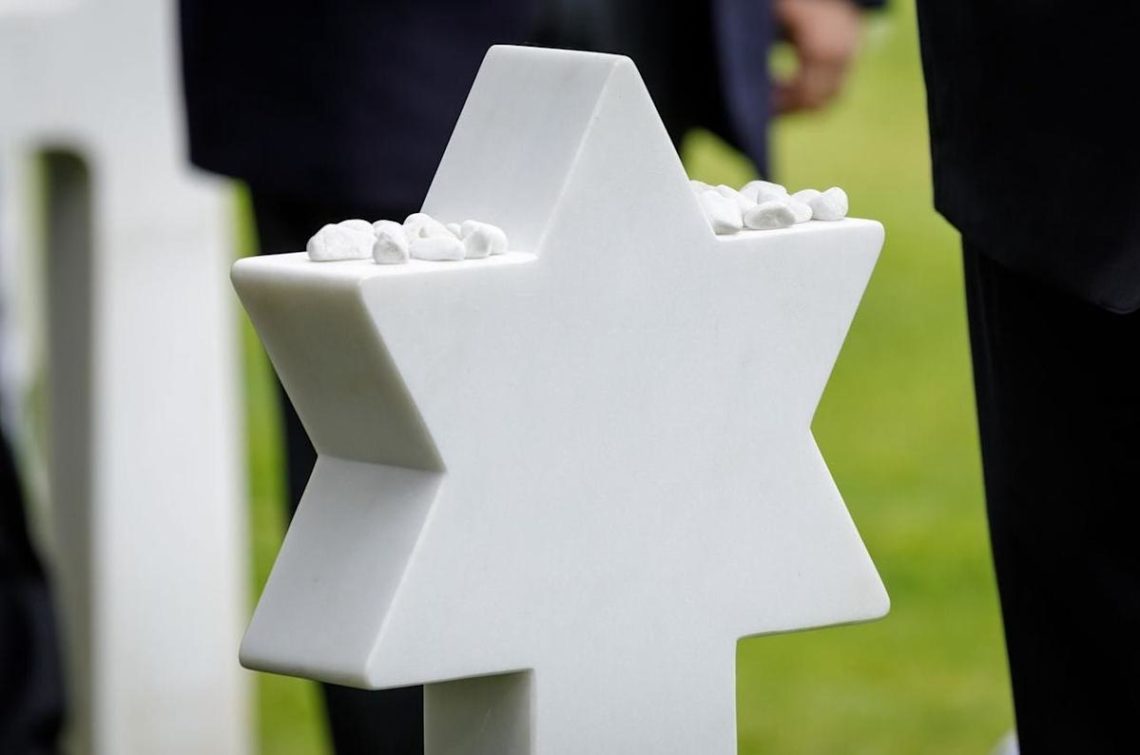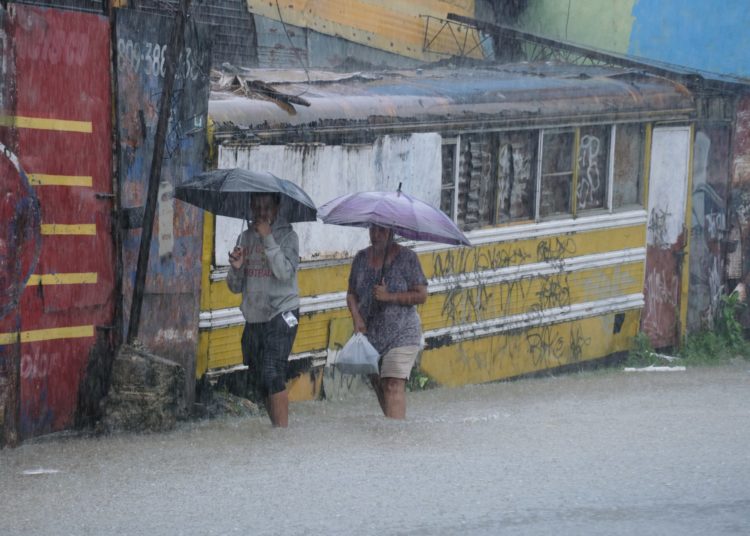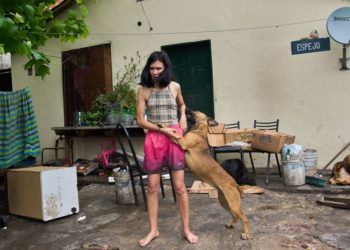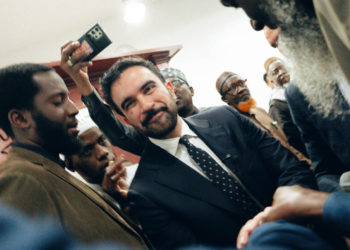MONDAY AFTERNOON WAS CRISP at Arlington National Cemetery during a first-of-its-kind ceremony that was more than a century in the making. Gathered at the graves of two World War I soldiers were more than 150 people: family, friends, dignitaries, veterans, and fellow Americans. The soldiers in question were Pvt. David Moser and Pfc. Adolph Hanf, whose headstones displaying crosses were replaced with markers bearing the Star of David, correcting a historical oversight that had misrepresented those soldier’s faith for more than a century. This act of remembrance was orchestrated by Operation Benjamin, a little-known non-profit dedicated to ensuring that Jewish-American soldiers are honored in death as they lived—in accordance with their faith.
Pvt. David Moser was born in New York to Benjamin and Lizzie Moser. He enlisted in the U.S. Army in 1917 and served with the 77th Field Artillery, participating in numerous battles across France. Tragically, after surviving the war, like so many soldiers fighting the war in Europe, he succumbed to the Spanish flu in March 1919, at the age of 20. Initially buried in Germany, his remains were reinterred at Arlington in 1920.
Pfc. Adolph Hanf, born in 1884 in Warsaw, immigrated to the United States in 1911. He volunteered in the Michigan National Guard and served with the 125th Infantry Regiment. Hanf was killed in August 1918, during the Battle of Fismes in France—a brutal engagement that paved the way for subsequent Allied offensives. Initially buried in France, he returned home and was reinterred at Arlington in 1922.
For decades, in Europe and at Arlington, both these Jewish soldiers were buried under headstones adorned with Latin crosses. How did such mistakes occur, and why has it taken so long to fix them? During the chaos of World War I, administrative errors were not uncommon. That war was, after all, the first conflict in which the United States deployed a massive expeditionary force overseas. More than 100,000 Americans were killed in action on foreign soil, and the military had limited logistics capacity to return their remains to the United States. Some families chose to have their loved ones remain interred at overseas sites, a choice that eventually resulted in the 26 cemeteries around the world supervised by the American Battle Monuments Commission. (I proudly served as a commissioner of the ABMC from 2021 to 2023.) Other families requested their soldiers be returned home after the war. But by that time, records had been lost, transfers were chaotic, and there were mistakes.
Political reporting and analysis you won’t find anywhere else—sign up to get our independent journalism delivered to your inbox.
During World War II, these issues repeated, but with even more massive numbers of casualties. To make matters more complex, some Jewish soldiers, fearing persecution if captured, chose to scratch their religious preference off their dog-tags, or even to omit or alter their religious affiliation on official records. All of this led to instances where the true faith of many servicemembers was not reflected on their grave markers.
IN 2016, RABBI J.J. SCHACTER WAS PAYING RESPECTS at the Normandy American Cemetery when he noticed the grave of a soldier with what he believed might be a Jewish name—Pvt. Benjamin Garadetsky—buried under a Latin cross. After significant historical research, contacts with living family members, and coordination with ABMC, Pvt. Garadetsky, became the first soldier whose gravestone Operation Benjamin—named after him—successfully changed in June 2018.
Since then, Operation Benjamin has identified more than two dozen Jewish soldiers at American military cemeteries worldwide who are mistakenly buried under Latin crosses. This endeavor—which entails significant research, family coordination, and government approval—ensures accurate recognition of soldiers’ faith identities. This unique organization provides comfort to families and enables visitors to better appreciate the sacrifice in the cause of democracy and freedom made by Jewish Americans in the military.
Before Monday’s ceremony at Arlington National Cemetery, which is overseen not by the ABMC but by the U.S. Army Department of National Military Cemeteries, Operation Benjamin’s mission focused almost exclusively on correcting markers in American military cemeteries abroad.For example, in April 2022, in coordination with the ABMC, Operation Benjamin replaced the Latin Cross headstones of seven Jewish-American service members with Stars of David in ceremonies at the Epinal, Lorraine, Luxembourg, and Ardennes American Cemeteries in Europe. In February 2023, at the Manila American Cemetery, the headstones of Pfc. Ralph G. Greenstein, Pvt. Harvey P. Mashatt, and Tech 5 Eugene Shore were replaced with Stars of David. Two more headstone replacements are scheduled at the Sicily–Rome American Cemetery and another at the Florence American Cemetery in Italy next month. Ongoing research is underway that may also affect the grave marker of Maj. Gen. Maurice Rose, the senior-most American officer killed in direct combat in World War II, at the Netherlands American Cemetery in Margraten.
I FIRST BECAME AWARE of Operation Benjamin when I served with ABMC. As a soldier who has visited many European battlefields and cemeteries during my time on active duty and in retirement, I’ve come to recognize the profound significance of faith, service, history, and identity to the people who choose to wear the cloth of the country and give everything for America.
Recognizing the ultimate sacrifice of American Jews is especially important now, as one third of American Jews said they had been the target of antisemitism in 2024, and according to one poll, an outright majority of Americans believe Jews are more loyal to Israel than to their countries of citizenship. Acknowledging and rectifying past mistakes is not just an act of remembrance but a renewal of a commitment to truth and justice. The gleaming white Stars of David in American cemeteries from Arlington to the Philippines to Western Europe are powerful, silent retorts to the age-old charge of dual loyalty. Ensuring we honor Pvt. Moser and Pfc. Hanf, and so many like them, we contribute to reaffirming our nation’s pledge to remember every soldier, ensuring that time does not dim the truth of their deeds or identities.
The attendees at the ceremony at Arlington on Monday ranged in age from about 8 to 102. Dr. Deborah Eiferman, Pvt. Moser’s 102-year-old niece, expressed profound gratitude for the correction of her “baby uncle’s” headstone. Rep. Ritchie Torres and Rep. Debbie Wasserman-Schultz were just two of the many government officials who delivered heartfelt remarks, emphasizing the importance of honoring the true identities of our fallen heroes. Representatives from the Department of Veterans Affairs and the ABMC also attended, underscoring the collaborative effort required to rectify these historical oversights.
Standing amidst the solemn rows of headstones at Arlington, I’m sure all those in attendance felt the weight of history, the feeling one always gets walking among the “gardens of stone” at our national cemeteries. But on that day, the two new Stars of David became more than symbols of faith. They became quiet but resolute declarations that identity matters, truth matters, and memories must be protected. In an era marked by the resurgence of antisemitism on college campuses, in online spaces, and in public life, these ceremonies stand in defiance of hatred and division. They tell us that every life has value, that every sacrifice has meaning, and that we, as a nation, must not forget our true heroes.
I AM A CATHOLIC, and a soldier who has spent a career walking among rows of marble markers in places where the cost of freedom is measured in silence. I served with soldiers, sailors, airmen, and marines of every faith and no faith, and never once did their conception of God, their scripture, or their religious practice cause me to question their honor, their commitment to their duty, their loyalty to their brothers and sisters in arms, or their patriotism.
I thought of them on Monday when Dr. Eiferman, several members of Congress, a rabbi, government officials, and current soldiers all stood shoulder to shoulder—a microcosm of a nation, in a small but mighty way, making something right. People coming together to right a historical wrong says something about the enduring promise of this country.
These men—Moser, Hanf, and the many others whom Operation Benjamin has honored and will honor in the months and years to come—gave up everything for that promise. Who are we to give up on it now?
Because when we honor truth, we defend memory. When we recognize identity, we affirm dignity. And when we restore the names and symbols of the past, we stand stronger—together—against the forces that would divide us.
The post After a Century, Two Soldiers Get True Rest appeared first on The Bulwark.




